
Shortly after the launch of the Apple iPhone 6 Plus, the well-known repair site iFixit eagerly released high-resolution images of the iPhone 6 Plus teardown. What does the internal structure of the iPhone 6 Plus look like? What are the specifications of the iPhone 6 Plus? Besides being larger, what differences does it have compared to the 4.7-inch iPhone 6? Let’s take a look at the high-resolution teardown images of the iPhone 6 Plus to find out.
Let’s take a look at how the 5.5-inch iPhone 6 Plus is constructed.
 The iPhone 6 Plus features a 5.5-inch 1920*1080 pixel (401ppi) IPS display, a 64-bit Apple A8 processor, storage options of 16GB/64GB/128GB, a 1.2-megapixel FaceTime camera, and an 8-megapixel main camera (supporting optical image stabilization). The RAM size that everyone is concerned about was found to be only 1GB after disassembly.
The iPhone 6 Plus features a 5.5-inch 1920*1080 pixel (401ppi) IPS display, a 64-bit Apple A8 processor, storage options of 16GB/64GB/128GB, a 1.2-megapixel FaceTime camera, and an 8-megapixel main camera (supporting optical image stabilization). The RAM size that everyone is concerned about was found to be only 1GB after disassembly.
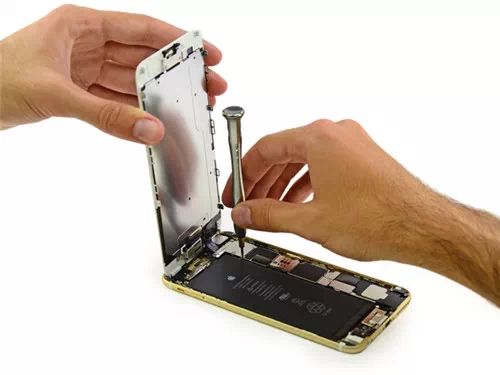
The first step is to open the front panel by unscrewing the screws located next to the Lightning port at the bottom with a specific screwdriver. Then, using iFixit’s special pliers, you can separate the screen from the battery and mainboard. It can be seen that the integration level of the front panel and the rear mainboard of the iPhone 6 Plus is very high, and after separation, there is basically no “broken connection” situation. The Touch ID fingerprint recognition component is also part of the front panel.
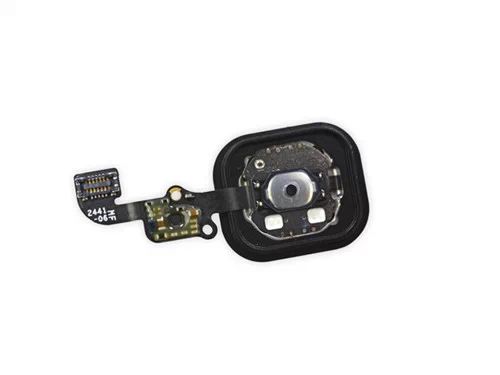
The Home button, which is also the fingerprint recognition component, is secured to the front panel with a metal plate.
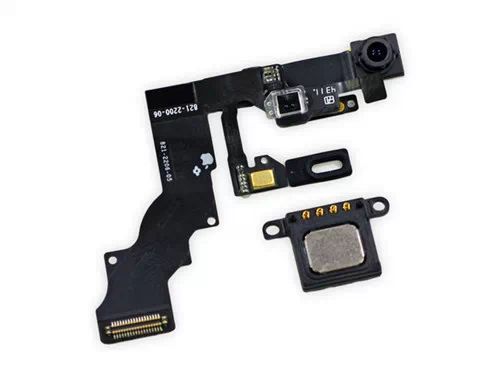
In addition to the screen and fingerprint recognition components, the most important component on the front panel is the front camera, which is often used for selfies. It occupies a significant space and has a relatively thick ribbon cable.
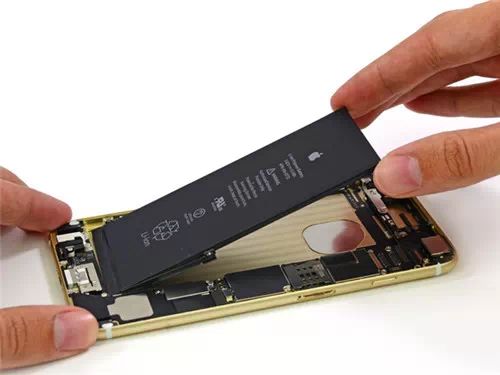
With fewer components on the front panel, let’s turn our attention to the more important mainboard and battery section. Thanks to the large size of the iPhone 6 Plus, its battery capacity has also significantly increased to 2915 mAh, nearly double that of the iPhone 5s’s 1560 mAh capacity, with a rated voltage and energy of 3.82 V and 11.1 Wh, respectively. However, during disassembly, care must be taken with the power cable and the adhesive pull tabs. iFixit mentions that if you know what to do, disassembly can be done easily; if you don’t know, you might “destroy the whole world”. Of course, the battery part is still glued to the back cover.
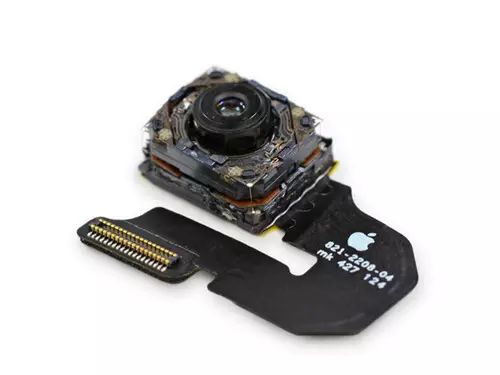
A significant difference between the iPhone 6 Plus and the iPhone 6 is that the 6 Plus has optical image stabilization for its camera. After disassembly, it was found that its internal structure appears quite precise.
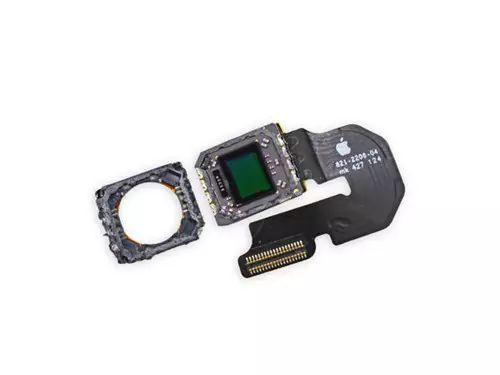
After removing the lens, we can see the camera sensor part, which has a parameter of F/2.2 aperture, a unit pixel size of 1.5 microns, 8 million pixels, and features Focus Pixel autofocus.
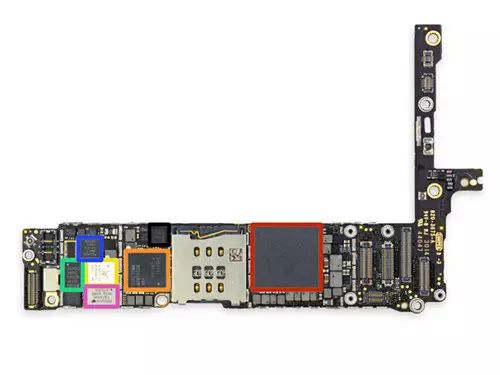
After removing some other small parts, we arrive at the core mainboard of the entire phone, which integrates a large number of chips on both sides.
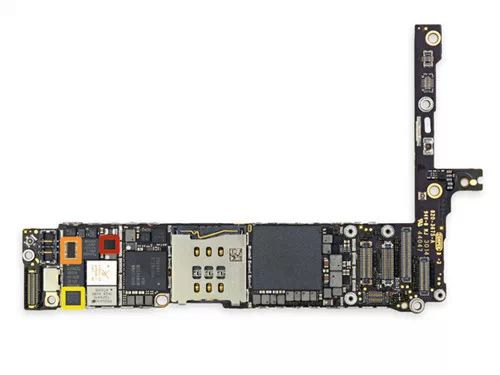
The image above shows:
-
The largest red area is the Apple A8 chip and Elpida 1 GB LPDDR3 RAM; yes, the RAM is still 1 GB.
-
The orange box to the left of the Nano SIM card slot is Qualcomm’s MDM9625M LTE modem.
-
The yellow part is the Skyworks 77802-23 low band LTE data packaging chip.
-
The cyan part is the Avago A8020 high band data packaging chip.
-
The blue part above is the Avago A8010 ultra high band PA and film bulk acoustic wave resonator.
-
The purple part is the TriQuint TQF6410 3G EDGE power amplifier module.
-
The hard-to-spot black part is the InvenSense MP67B 6-axis gyroscope and accelerometer.
Most of these chips are used for 3G and 4G communication.
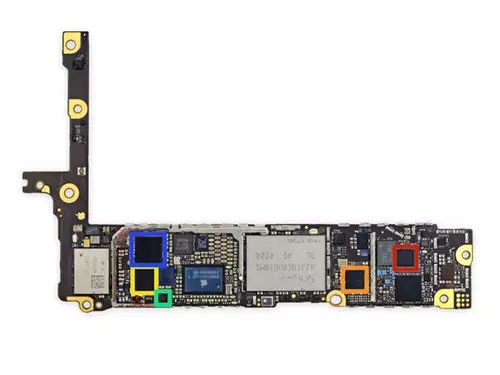
Also regarding the panel:
-
The red area is the Qualcomm QFE1000 packaging integrated IC.
-
The orange part is the RF Micro Devices RF5159 antenna switch module.
-
The yellow part is the SkyWorks 77356-8 mid band data packaging chip.
Next, we will flip the mainboard over and enter another world.
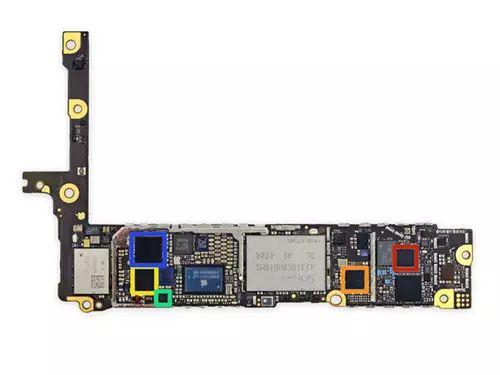
Among them:
-
The red area is the SK Hynix H2JTDG8UD1BMS NAND flash memory; it seems that iFixit disassembled the 128 GB version, showing true luxury.
-
The orange part is the Murata 339S0228 Wi-Fi module.
-
The cyan part is the Broadcom BCM5976 touchscreen controller.
-
The yellow part is the Apple/Dialog 338S1251-AZ power management IC.
-
The blue part is the NXP LPC18B1UK ARM Cortex-M3 microcontroller, commonly known as the M8 co-processor.
-
The purple part is the NXP 65V10 NFC module and secure chip.
-
The black frame that needs careful observation is the Qualcomm WTR1625L RF transmitter.
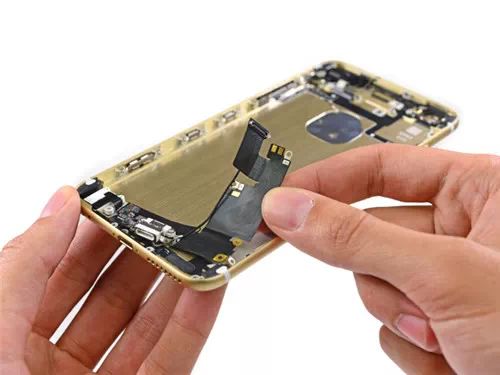
In addition to the components listed above, there are also many other components:
-
The red indicates the Qualcomm WFR1620 auxiliary reception chip.
-
The orange part is the Qualcomm PM8019 power management IC.
-
The yellow part is Texas Instruments 343S0694 touchscreen transmitter.
-
The cyan part is AMS AS3923 NFC tag.
-
The blue part is Cirrus Logic 338S1201 audio codec.
After analyzing the mainboard, the rest is almost disassembled. The components held below are the speaker part and the Lightning connector.
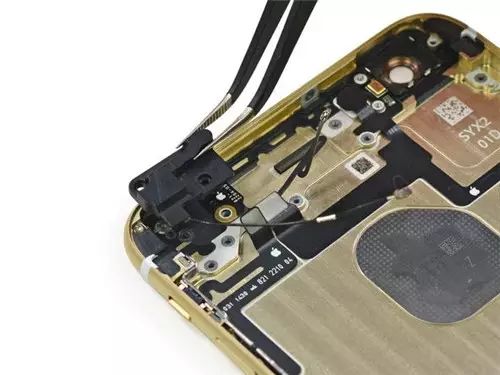
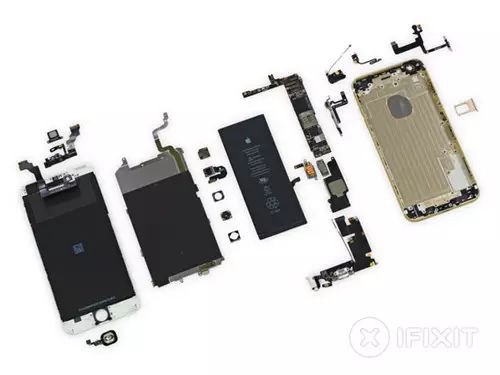
iFixit finally gave the iPhone 6 Plus a repairability score of 7 out of 10, which is considered average. In comparison, the tightly assembled HTC One M8 received a repairability score of 2, indicating that once disassembled, it is nearly impossible to reassemble. Meanwhile, the Nexus 5, due to its modular design, is easy to disassemble and repair, scoring 8.
According to iFixit, the iPhone 6 Plus performs well in terms of disassembly and subsequent repairs, as the screen and battery are easy to separate, making repairs easier. The structure of the fingerprint recognition component has seen improvements compared to the iPhone 5s, making it less likely to be damaged during disassembly. The downside is that the screws used are still not universal, requiring special screwdrivers for disassembly. Additionally, Apple is very conservative in sharing repair and disassembly information, which is detrimental to third-party repairs.
Image reference: Reportedly the first iPhone 6 that was dropped and shattered in Japan.

 Content organized by: Changde Dimension
Content organized by: Changde Dimension
Some graphic and text materials are sourced from the internet.
